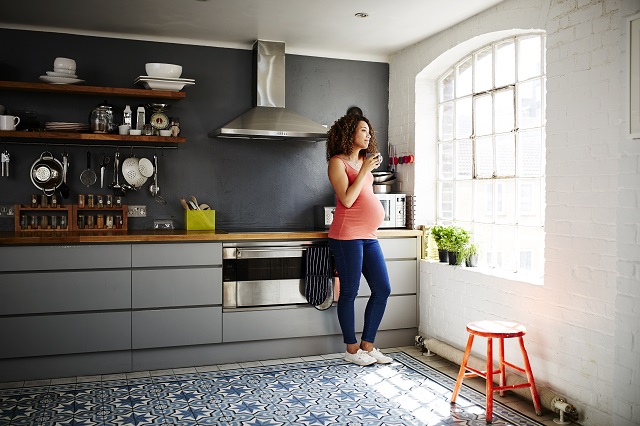
They say your body is a temple—take care of it and it will take care of you. It’s time to apply that same thinking to your home. After all, we spend 90% of our time indoors, two-thirds of it at home. Why not create the healthiest possible home environment for you and your family, with the cleanest air, purest water, safest layout, and more?
HomeAdvisor’s Healthy Home Checklist offers a comprehensive plan for doing just that, including behavioral changes that you can start today, as well as professional upgrades that should be part of any long-term renovation plans. With more home buyers making wellness part of their decision process, our checklist will improve your home’s value, as much as your physical and mental wellbeing.
Step One: Clear the Air
The air inside our homes is up to five times more polluted than outside air, due to the presence of toxins, allergens, and other airborne contaminants, according to the U.S. Environmental Protection Agency. Health impacts range from short-term symptoms like eye, nose, and throat irritation to long-term effects like asthma and other respiratory issues.
Vacuum regularly and effectively.
This simple housecleaning task is one of the best ways to reduce airborne allergens. Try to vacuum at least once a week, more if you have pets. Our cleaning pros say vacuums with HEPA filters are best at capturing contaminants.
Open a window.
Assuming the weather is right, and the pollen count not too high, opening a window or screen door will replace polluted indoor air with fresh air from outside.
Put out the welcome mat.
Wipe shoes before coming indoors to reduce the number of pollutants entering the home. Instating a shoes-off policy is even more effective
Upgrade your furnace filter.
Most forced-air furnace systems have a 1-inch thick filter that’s designed to protect the mechanical workings. Next time you have the system serviced by a professional, ask them to retrofit a new housing to accommodate a filter that’s 2 to 5 inches thick. The larger filter will capture more fine particulates, improving your home’s indoor air quality many times over.
Improve your home’s mechanical ventilation.
Open windows are great but installing exhaust fans throughout the home will do even more to improve indoor air quality. In the kitchen, add a ducted range hood that vents to the outside to suck away smoke and fumes. Add bathroom exhaust fans to remove steam, minimizing the risk of mold and mildew. Find heating and cooling contractors in your area.
Put in a whole-house air cleaner.
Adding one of these robust systems to your HVAC’s return duct line will scrub air of harmful toxins as it circles through the air handler. Some of the latest equipment uses smart technology to alert homeowners to the presence of harmful toxins. The average cost to install a whole-house air cleaner is $1,800, but satisfaction rates are extremely high, especially for households with allergy sufferers.
Step Two: Clean the Water
While the U.S. has some of the safest drinking water in the world, the infrastructure that delivers water to homes is aging fast (the EPA recently reported that $743 billion is needed to update the system). That means homeowners have to do more to keep their water safe.
Check your water.
If you get a water bill, you should also receive an annual Consumer Confidence Report, indicating the presence of contaminants; copies are available through the EPA website. Homeowners on well water should have the water tested once a year. DIY test kits are available, but you’re better off paying a certified lab $50 to $150 for the service since their sophisticated equipment will be much more exact.
Put in a water filter.
If your water test detects the presence of contaminants, you need to install some kind of point-of-use filtration system. Even if the water comes back clean, you may want to consider a filter to improve its smell and taste. The average cost to install a water treatment and purification system is $1,800. But there is a wide range of options, from under-counter filters that connect to the kitchen faucet ($100-$500) to whole-house reverse-osmosis systems that require professional installation and servicing ($1,000 and up).
Consider Installing a water softener.
Hard water containing calcium, magnesium, and other dissolved minerals isn’t harmful to drink, but it can affect the health of your appliances, plus it will quickly clog up point-of-use water filters. Water softeners take care of the problem by replacing minerals with soft sodium ions or potassium chloride. The systems typically cost a few thousand dollars, though companies lease them for $50 to $100 a month. For more information, find water softener companies in your area.
Step Three: Promote Healthy Habits
Diet and exercise are the cornerstones of healthy living, allowing you and your family to maintain a healthy weight and reduce the risk of chronic conditions, including heart disease, cancer, and diabetes, according to the U.S. Department of Health & Human Services. And so many of the most important healthy habits in life start at home.
Stock up on diet-friendly appliances.
Splurge on a premium blender for vitamin-packed smoothies, soups, and more. Pick up a multicooker, great for easy, nutritious home-cooked meals or for batches of quinoa or yogurt. Add a kitchen scale to help with portion control.
Make healthy foods visible.
Studies have found that keeping fresh fruits and vegetables on the top shelf of the fridge instead of the crisper drawer increases consumption many times over. Having nuts and precut veggies at the ready offers a healthy alternative to chips, cookies, and other processed snacks.
Control the clutter.
A messy home increases stress. Remove stuff you no longer need or value and find a place for the keepers, ideally where it will be close at hand. In the kitchen, for example, dishes should be in a cabinet near the dishwasher while knives belong near the food-prep area.
Create a landing spot just off the kitchen for mail, school papers, and the like to prevent these items from cluttering countertops. If your home is severely disorganized, consider hiring a professional organizer to help bring order.
Look for healthy large appliances too.
When renovating, take advantage of the latest generation of appliances that encourage healthy diets. Ovens with steam cooking make it easy to prepare lean fish and vegetables; we’re also seeing more ovens with built-in sous vide, a healthy way to prepare meat, fish, and more. As for food storage, new column-style refrigerators encourage the purchase of fresh foods, instead of having a freezer full of frozen processed goods.
Reduce noise levels for a quieter home.
Loud noises make it hard to relax and unwind. Plus approximately 48 million Americans have some degree of hearing loss, according to the Hearing Loss Association of America. Installing windows with sound-reducing insulated glass can minimize noise pollution from outdoors; the average cost to install new windows throughout the entire home is around $5,500. Adding drapes will also help absorb loud noises. And the EPA recommends keeping the TV and music speakers below 45 decibels, the level at which it’s still easy to have a normal conversation.
Create a mental health center.
A fully appointed home gym might be out of reach, but carving out a quiet nook for reading, meditation, and yoga or another form of light exercise will help bring balance to your day. If you’re looking for more of a workout, connected exercise equipment (think Peloton bikes) makes cardio possible without sacrificing too much living space.
Step Four: Control the Climate
Fluctuating temperatures in the home can lead to a host of health conditions, from asthma to poor sleep quality. Extreme temperatures are particularly dangerous to the elderly.
Switch your thermostat.
If you haven’t made the switch to a programmable thermostat, you’re sacrificing comfort and energy dollars. The smart devices automatically adjust the temperature in your home when you’re asleep or away, keeping the climate just right while reducing your heating and cooling bills by as much as 10%, according to the U.S. Energy Department.
Seal air leaks.
Besides causing a chill, air leaks can drive up heating costs by $100 a year or more each year. To pinpoint leaks, hold a candle or incense stick to windows and doors on a windy day. If the smoke blows sideways, you’ve got a leak. Seal the opening with caulk, weather stripping, or expandable foam sealant.
Choose the right mattress.
Preferences are personal, so it’s best to try mattresses in the store. In terms of temperature, gel mattresses tend to sleep slightly cooler. Whichever mattress you choose, be sure to reduce allergens by encasing it, along with the box spring and pillows, in covers made from woven microfibers.
Update your heating system.
Most HVAC systems last 15 to 20 years. If yours is nearing its end of life, updating to new equipment will deliver improved performance and efficiency. For example, some of the latest gas furnaces have an annual fuel-utilization-efficiency (AFUE) rating of 97%, compared with the 70% that was typical a generation ago, according to Trane, a manufacturer of HVAC equipment. The average cost to replace a furnace is around $4,500.
Check the insulation.
Especially if you live in an older home—built before 1980, say—you should check that there’s adequate insulation in the attic, since building codes didn’t used to require it. You want to see 11 inches of fiberglass insulation or 8 inches of cellulose insulation. If there’s an attic hatch door, it should also be insulated. The average cost to install insulation between $1,400 and $2,300.
Step Five: Improve the Lighting
Past HomeAdvisor surveys of homeowner happiness have found that abundant natural light in the home promotes positive moods. Sufficient artificial light, meanwhile, is essential for safety and functionality, especially as we age (a 60-year-old needs twice as much light as a 30-year-old, according to the American Lighting Association).
Check the bulbs.
If you haven’t made the switch to LED bulbs, now’s the time. Besides being extremely energy-efficient, today’s LEDs come in a range of color temperatures, from warm yellow for living rooms, to bright white for bathrooms and laundry areas. Plus, you can put LEDs on dimmer switches, allowing you to adjust light levels as needed.
Minimize nighttime light pollution.
Install blackout blinds to create total darkness. Avoid electronic devices at least one hour before bed and try to make the bedroom a totally screen-free zone, including phones, laptops, and TVs. If you must be on a screen in the evening, switch it into “dark mode” to reduce exposure to blue light, which interferes with sleep patterns and melatonin.
Remember the outdoor lighting.
Proper lighting at the front entry is especially important for safety and curb appeal. Don’t undersize the fixture. The American Lighting Association recommends lanterns that are between 25 and 35% of the door opening. The average cost to install a wall-mounted light fixture is between $90 and $230.
Bring in more natural light.
A well-placed window, skylight, or glass door can dramatically improve the feel and function of an interior; when renovating, look for opportunities to have windows on multiple walls in a room, since this increases the sense of spaciousness. The average cost to install a window is $300 to $1,200; the average cost to install a skylight is $1,600, and the average cost to install an exterior door is $1,000.
Install circadian lighting.
Also known as human-centric lighting, these fixtures and controls allow artificial light in the home to mimic outdoor light, for example getting bright and cool during the day, and becoming progressively softer and warmer as evening approaches. The technology promotes sleep at night and productivity during waking hours.
Step Six: Eliminate Hazards
Most preventable injury-related deaths happen at home—127,300 in 2017, according to the most recent data from the National Safety Council. And tens of millions of preventable injuries occur every year.
Prevent accidental poisonings.
They cause roughly half of all home deaths. Install safety locks in homes with children and store potential poisons, including detergents, medications, and chemical products, out of reach and out of sight.
Minimize trips and falls.
For the 65 and older set, falls are the leading cause of death. Ensure that all pathways in the home are clutter-free and brightly illuminated; watch out for things like electrical cords and pet bowls. Remove area rugs or secure them with double-sided carpet tape and put a rubber mat in the bathtub or shower.
Check smoke alarms.
Roughly 3 out of 5 fire-related deaths happen in homes with no smoke alarms or no working smoke alarms, according to the National Fire Protection Association. Check that a working smoke alarm is on every level of the home and outside each sleeping area; alarms that also check for carbon monoxide give you added protection.
Consider a home security system.
While systems are designed with security in mind, many of them will also help protect homeowners from fires and carbon monoxide poisoning, and they can also provide medical help in the case of emergencies.
Take advantage of smart home technology.
Many home-monitoring companies now also install motion sensors to facilitate aging in place, allowing caregivers to keep tabs on aging relatives who wish to stay put in their existing home, rather than seek some form of assisted living.
Install grab bars and slip-resistant flooring.
These two measures are particularly important in the bathroom, where many falls occur. Slip-resistant flooring often comes in less expensive materials, such as vinyl or linoleum, making this a cost-effective project.
Step Seven: Connect with Nature
There’s increasing science around the benefits of biophilic design, or architecture that promotes a connection between people and nature; one Danish study found that children who grew up around greenery were 55% less likely to develop mental health problems.
Incorporate nature indoors.
Simply adding a few potted plants to the home can promote the benefits of biophilia. Indoor water fountains are a way to simulate the sounds of nature indoors. Or ask your smart speaker to play audio tracks of nature sounds.
Create the illusion of outdoor space
Consider adding a false window or skylight, basically a backlit panel with a realistic view of nature printed on it, like a cloud-dotted blue sky or a forest thick with trees. High-tech virtual windows with images streamed from a hi-res camera mounted outside cost thousands of dollars. Simpler versions with a static printed image start at a few hundred dollars.
Start a garden.
Besides being a good form of exercise, gardening is an excellent way to engage with nature. Try planting wildlife-loving species that will attract local birds and insects, or a vegetable garden to put healthful food on your dinner table.
Create views of the outdoors.
When renovating, look for ways to incorporate views of gardens, trees, flowers, and the like into the design. In luxury markets, we’re seeing more use of window and door systems that turn entire walls into expansive vistas of the exterior. But a single, well-placed window can be enough to create an inspiring view.
Establish an outdoor entertaining area.
Create a dedicate space for outdoor dining and entertaining. Whether it’s a patio, deck, or more elaborate outdoor structure, the addition will promote regular engagement with nature. The average cost to build a deck is $7,500; patios can often be built for less since they’re installed directly on the ground.
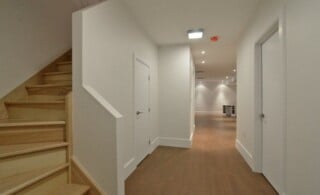 Lead Paint Common Sense
Lead Paint Common Sense 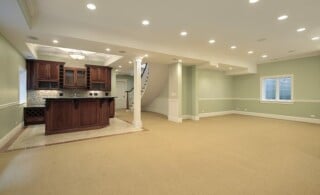 How Do I Get Rid of the Moldy Odor in My Basement?
How Do I Get Rid of the Moldy Odor in My Basement? 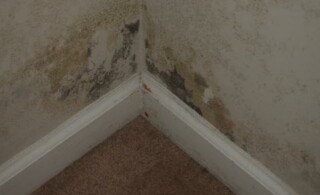 How to Remediate Mold
How to Remediate Mold  Understanding Toxic Black Mold
Understanding Toxic Black Mold 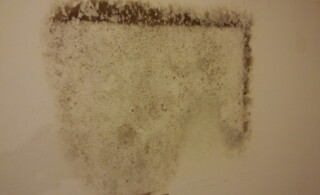 The Reason for Mold Inspection
The Reason for Mold Inspection 

Are You Familiar With This Topic? Share Your Experience.